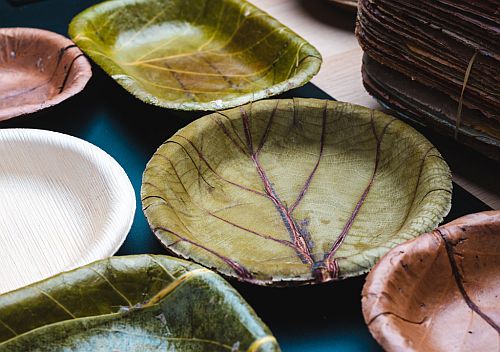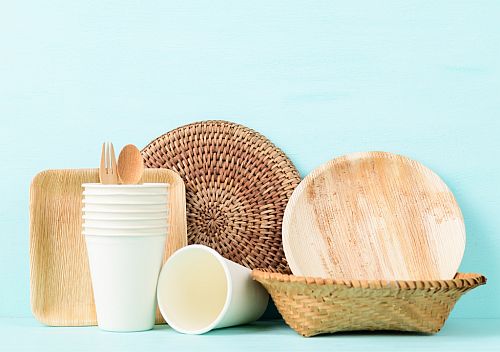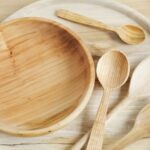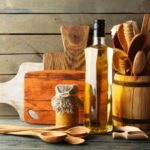Disposable tableware is the best alternative to regular ceramic or glass plates for occasions such as short family dinners, picnics, get-togethers, and any outdoor event. Disposable tableware and cutlery are extremely practical for such occasions. However, some disposable tableware is made from materials that cannot be recycled and therefore can be harmful to the environment.
Why Choose Biodegradable and Compostable Disposables
Materials such as plastic or styrofoam are non-biodegradable. Disposable tableware made from these materials negatively affects the environment during manufacturing and persists long after the items have been disposed of irresponsibly. In addition, using disposable tableware made from these materials can affect your health and that of your family and friends, as they contain chemicals that can leach into food and cause contamination.

Due to the increasing worry for the environment, traditional disposable tableware is being replaced with biodegradable tableware. Commonly used materials include bamboo, palm leaves, grasses, and waste obtained from sugar cane. Once disposed of, these eco-friendly tables quickly biodegrade and serve as compost for growing plants.
To contribute to saving the planet, you should use compostable dinnerware instead of non-degradable ones. Unlike Styrofoam or plastic tableware made from petroleum products or paper, compostable tableware has huge environmental benefits; It takes up a smaller percentage of landfills. Not only do you protect the environment, but you can also enjoy the convenience of not washing tons of dishes.
1. Bamboo Disposable Plates
The bamboo plant grows quickly and can grow back after harvesting. Once thrown away, it will degrade within six months. These properties make bamboo a great choice for disposable plates. When making disposable bamboo plates, the bamboo cover is cleaned, boiled, pressed, and glued together with environmentally friendly glue. After use, the panels can be placed in a compost pile and completely break down in four to six months.
What Are the Bamboo Plates Suitable for?
Bamboo disposable plates can be used for outdoor events such as casual garden weddings, pool/garden bachelorette parties, conferences, picnics, birthdays, BBQs, quick family dinners, and almost any occasion.
They look nicer and are more durable than cheap plastic or paper plates and can be used for any occasion where you would rather forgo the normal ceramic plates but still want a nice ambiance.
They are suitable for various foods including fatty foods, salads, fruit, cheese, crackers, quiche, sandwiches, and vegetables.
They are not as rigid as regular plates, making them suitable for sit-down dinners. You can also work on these sturdy plates with a knife and fork.
They come in different sizes; The larger plates can be used for complete meals, while the smaller plates are perfect for side dishes and appetizers.
Benefits of Using Disposable Bamboo Plates
- Unlike paper plates, bamboo plates can be used for wet, heavy, or hot foods as they are sturdier and can withstand larger quantities of food.
- Unlike plastic and paper disposables, bamboo plates are attractive and stylish and will complement any type of décor.
- Unlike plastic plates that can contaminate food with chemicals, bamboo plates are naturally antimicrobial and contain no chemicals that can leach into food.
2. Palm Leaf Plates
The Areca palm is the most commonly used plant to make disposable plates because its fronds naturally fall to the ground very often. These fronts are very large and are used to produce panels in a simple process that does not require the use of chemicals. The freshly fallen leaves are harvested, cleaned, and air-dried. They are then flattened, stretched, and heat-pressed to form many beautiful patterns.
Palm leaf plates are biodegradable as no chemicals are used in the production of the plates. They are the best option for natural and eco-friendly disposable tableware. Once disposed of, it takes approximately 90 days for them to biodegrade.

What Are Palm Leaf Plates Used for?
These plates are beautiful, chic, and suitable for outdoor events. They fit perfectly into the outdoor environment. Their color and appearance make them suitable for outdoor parties, barbecues, get-togethers, country weddings, family reunions, and picnics. They are very stylish and give your event that certain something.
They are sturdier than paper plates, making them suitable for snacks, chips, sandwiches, vegetables, and main courses.
They don’t get soggy easily but are not suitable for serving hot or wet foods that would be left in for a long time.
Benefits
Disposable palm leaf plates come in many different shapes and designs, making them suitable for a variety of events. Palm leaf plates retain their natural textures and designs throughout the entire production process. The uniqueness of the designs will make your occasion more memorable and elegant.
Palm leaf plates are very stable, leak-proof, heat-resistant, and microwave-safe. They are thick and can be used for storing liquids as well as serving hot and cold foods for short periods. After some time, the plate would absorb moisture and leaks could occur.
Since the production process is chemical-free, the plate will not affect the taste of food or react with the food served in it. They are also odorless, hygienic, and quickly biodegradable without any additional effort. This type of disposable tableware does not require an “industrial composting facility.”
Related product: Better Than Bamboo 50 10″ Square Palm Leaf Plates + 100 Cutlery
3. Sugarcane Plates
The fiber obtained after extracting the sugar juice from sugarcane can be used to make disposable plates. The fiber is called bagasse and is refined and made into home compostable plates, bowls, and food containers. It can be disposed of in the garden or in the compost heap, where it will biodegrade in a very short time.
What Are Sugarcane Plates Used for?
Sugarcane plates are more attractive than traditional paper plates and can be used for any outdoor party or family picnic.
They can also be used for a casual outdoor wedding, garden party, or backyard barbecue, as well as dessert plates for a birthday party.

Benefits
Sugarcane plates are light and stronger than paper plates, but not as strong as plastic plates. They can be used to serve liquid or oily foods without leaking or cracking.
Cane plates are usually brown, making them perfect for any home event. They can also be heated in the microwave up to 200 degrees Fahrenheit.
You’ve probably already noticed that bamboo plates are the sturdiest of the three types of compostable plates and can easily be loaded with all types of food. You can also manipulate them with forks and knives. Palm leaf plates and sugarcane plates are also suitable for any type of party, especially outdoor events. Just make sure you choose the best shape and size for your needs and don’t let it sit with liquid foods for a long time.
Related product: ECOLipak 125 Pack Compostable Square Sugarcane Plates





Wow, I did not realize that there were so many compostable plates to choose from. However, it really is a good idea to know which ones are available, especially if you’re planning a big party. That way you can make sure that the trash you generate is easily taken care of.
It’s too bad that so many plates are being made out of Palm Leaf. The Amazon Rainforest is being destroyed at an alarming rate in order to plant Palm tree plantations. Palm oil and any palm products should be avoided as this is causing lost habitat for countless species including endangered orangutans.
I checked this based on the other comments. Thank you Thorlak for your concern. It does appear the source of palm dinnerware is different trees than those of palm oil production. Good to know!
R Thorlak:
Please educate yourself before making blut statements:
Here is a good point to start:
https://www.naturallychic.green/blogs/news/palm-leaf-products-production-vs-palm-oil-production-here-are-the-facts-1
Het,
Thanks for sharing this article.
On Amazon’s product pages for the sugar cane plates, everyone I have seen state the plates can only be composted at a commercial or industrial facility, otherwise, they’re no better than regular paper plates